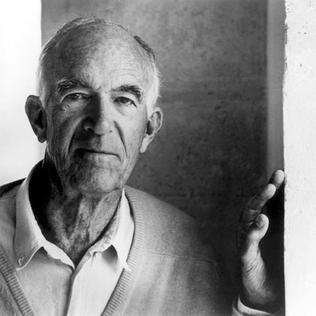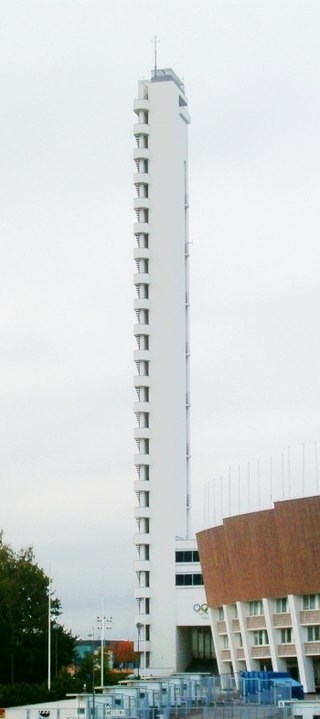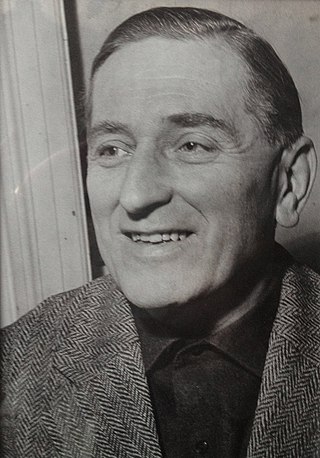
Jørn Oberg Utzon was a Danish architect. In 1957, he won an international design competition for his design of the Sydney Opera House in Australia. Utzon's revised design, which he completed in 1961, was the basis for the landmark, although it was not completed until 1973.

Modern architecture, also called modernist architecture, was an architectural movement and style that was prominent in the 20th century, between the earlier Art Deco and later postmodern movements. Modern architecture was based upon new and innovative technologies of construction ; the principle functionalism ; an embrace of minimalism; and a rejection of ornament.

In architecture, functionalism is the principle that buildings should be designed based solely on their purpose and function. An international functionalist architecture movement emerged in the wake of World War I, as part of the wave of Modernism. Its ideas were largely inspired by a desire to build a new and better world for the people, as broadly and strongly expressed by the social and political movements of Europe after the extremely devastating world war. In this respect, functionalist architecture is often linked with the ideas of socialism and modern humanism.
The year 1930 in architecture involved some significant events.
The year 1917 in architecture involved some significant architectural events and new buildings.

Skogskyrkogården is a cemetery located in the Gamla Enskede district south of central Stockholm, Sweden. It was inaugurated in 1920 and was inscribed on the UNESCO World Heritage List in 1994. Its design, by Gunnar Asplund and Sigurd Lewerentz, reflects the development of architecture from Nordic Classicism to mature functionalism.

Erik Gunnar Asplund was a Swedish architect, mostly known as a key representative of Nordic Classicism of the 1920s, and during the last decade of his life as a major proponent of the modernist style which made its breakthrough in Sweden at the Stockholm International Exhibition (1930). Asplund was professor of architecture at the Royal Institute of Technology from 1931. His appointment was marked by a lecture, later published under the title "Our architectonic concept of space." The Woodland Crematorium at Stockholm South Cemetery (1935-1940) is considered his finest work and one of the masterpieces of modern architecture.

Stockholm Public Library is a library building in Stockholm, Sweden, designed by Swedish architect Gunnar Asplund, and one of the city's most notable structures. The name is today used for both the main library itself as well as the municipal library system of Stockholm.

Paul Marvin Rudolph was an American architect and the chair of Yale University's Department of Architecture for six years, known for his use of reinforced concrete and highly complex floor plans. His most famous work is the Yale Art and Architecture Building, a spatially-complex Brutalist concrete structure. He is one of the modernist architects considered an early practitioner of the Sarasota School of Architecture.

Erik William Bryggman was a Finnish architect. He was born in Turku, the youngest of the five sons of Johan Ulrik Bryggman (1838–1911) and Wendla Gustava Bryggman (1852–1903). He began studies in architecture at Helsinki University of Technology in 1910 and qualifying as an architect in 1916. In 1914 he and fellow student Hilding Ekelund made a study trip to Denmark and Sweden. In 1920 he travelled to Italy, where he became inspired more by the local vernacular architecture than the classical or Baroque works. He worked in Helsinki for various architects, including Sigurd Frosterus, Armas Lindgren, Otto-Iivari Meurman and Valter Jung before starting his own office in Turku in 1923. Bryggman's architecture is noted for its combination of Nordic, classical and modernist characteristics.
Studio Granda is a practice of architects based in Reykjavík, Iceland. It was founded in 1987 by partners Margrét Harðardóttir and Steve Christer. They studied at the Architectural Association in London.

Nordic Classicism was a style of architecture that briefly blossomed in the Nordic countries between 1910 and 1930.

The Stockholm Exhibition was an exhibition held in 1930 in Stockholm, Sweden, that had a great impact on the architectural styles known as Functionalism and International Style.

Structuralism is a movement in architecture and urban planning that evolved around the middle of the 20th century. It was a reaction to Rationalism's (CIAM-Functionalism) perceived lifeless expression of urban planning that ignored the identity of the inhabitants and urban forms.

The Siemensstadt Settlement is a nonprofit residential community in the Charlottenburg-Wilmersdorf district of Berlin. It is one of the six Modernist Housing Estates in Berlin recognized in July 2008 by UNESCO as a World Heritage Site because of their outstanding modernist architecture and contribution to the progressive housing reform movement during the Weimar Republic.

Utzon's House in Hellebæk is a one-storey private home in Hellebæk, not far from Helsingør, in Denmark's northern Zealand. Built by the world-famous architect Jørn Utzon for his family and himself in 1952, its innovative design was welcomed by the world of architecture.

Flemming Lassen was a Modernist Danish architect and designer, working within the idiom of the International Style. Among his most notable buildings are libraries and cultural centres. He was the brother of Mogens Lassen, also an architect.

Villa Sturegården is arguably the first completed project (1913) by architect Gunnar Asplund. It is a residential house located in the city of Nyköping, some 100 km south of Stockholm, Sweden.
Liane Lefaivre, a Canadian and an Austrian, is o-Professor of Architectural History and Theory at the University of Applied Art in Vienna Austria, now retired.

The Asplund Pavilion is an Installation art structure built in 2018 in Venice, Italy. It is located at the Cini Foundation in a forest on the island of San Giorgio Maggiore. It was created for the 16th Venice Biennale art exhibition as one of eleven structures for the "Vatican Chapels" project, which was promoted by the Holy See. The project was the first time the Holy See had sponsored an art project at the exhibition. The Asplund Pavilion is noted for offering insights into contemporary perspectives on worship spaces from architects representing diverse cultural backgrounds.















